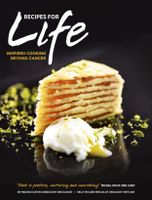Advertisement
At-a-glance guide to using ingredients
Published 2013
| Be Generous With... | Use in Moderation... | Think of Alternatives For... | Notes | |
Dairy |
(Semi) skimmed milk Natural yoghurt Eggs Soya cream Oat/almond/hazelnut/rice milk |
Any good quality cheese Crème fraîche |
Full fat milk Cream Soya milk |
Use full fat variations of dairy produce sparingly; opting for skimmed varieties instead helps to reduce the amount of saturated fat in your diet. Similarly, use small amounts of good quality cheese to add flavour to dishes, rather than using cheese as main ingredient. Use eggs as a healthy alternative to meat as they are a great source of protein, iron and vitamin D. |
Meat |
Chicken Turkey Rabbit |
Beef Lamb Mutton Pork Veal Venison Liver Duck Goose Game birds |
Processed (cured or smoked) meat |
Limit your red meat intake to once per week. If using poultry try to reduce the amount and add in some plant based protein sources e.g. lentils or beans to complete the dish. Processed (cured or smoked) meat e.g. ham, bacon, chorizo or salami should be avoided. Cooking meats at lower temperatures for a longer period of time e.g. casseroling, reduces the formation of potentially cancer-causing compounds produced when meat is fried or grilled at higher temperatures. Removing the skin and fat from cuts of meat before cooking helps to reduce the saturated fat content. |
Fish |
Oily Fish: Anchovies, Eel, Herring, Kipper, Mackerel, Pilchards, Wild Salmon, Sardines, Trout, Tuna steak White Fish: Cod, Coley, Haddock, Halibut, Plaice, Red Snapper, Sea Bass, Sole, Skate, Sea Bream, Tilapia, Turbot |
Smoked fish. Larger fish e.g. shark or swordfish (use sparingly due to contaminant issues). |
Think of ways to cook the fish without adding extra fat through frying i.e. baking/steaming. Fish should be featured plentifully in a cancer protective diet with a particular focus on omega-3 rich oily fish. |
|
| Plant Proteins | Seeds e.g. Pumpkin. Sesame, Sunflower. Chia and Flax Edamame (Soy) beans, Tempeh or Tofu Lentils or beans -all varieties |
Nuts (all varieties) e.g. Brazil, Cashew, Pecan, Walnut, Pistachio | Peanuts | As a general rule, all of us should be moving towards a pattern of eating fish at least 3 times per week, lowering our meat intake and having at least two meat-free days per week. We can do this by using a variety of plant based protein sources instead e.g. lentils, chickpeas, beans (all varieties), nuts and seed, soya beans, tofu and tempeh. |
Fruits and Vegetables |
As many as possible – trying to get at least two into each meal time |
Dried fruits Vegetable juices / smoothies |
Fruit juices / smoothies |
Cooking vegetables for shorter periods helps to retain important water soluble vitamins; steaming or stir-frying are good options. It is preferable to eat whole fruits as opposed to fruit juices or smoothies which can have a particularly high fructose content. See the smoothie/juice section of this book for some healthier vegetable-based smoothie recipes. |
Starches/Grains/Flours |
Quinoa Basmati, Wild, Red Camargue rice Whole wheat pasta/ Spelt Wholegrain/ seeded breads Butternut Squash Pumpkin Sweet potato |
White pasta White potato |
White bread White flour (and things made from this e.g. cakes, biscuits and pastry). |
Choose whole grains as opposed to refined carbohydrate foods wherever possible. Serving starches and grains with some protein or fat helps to slow the release of the sugars and stabilise blood glucose levels. Think about the balance of carbohydrate, and protein within each meal. |
| Herbs & Spices | All except salt | Salt |
Most herbs and spices contain important phytochemicals that can offer health benefits. Use plentifully in cooking to add both flavour and nutrition. |
|
|
FATS/OILS |
Olive oil Rapeseed oil Nut oils Avocado oil |
Sunflower oil Corn oil Sesame oil |
Butter Coconut oil Palm oil Margarine |
Use oil sparingly in cooking – the aim is to limit total fat intake. Saturated fats, e.g. butter or coconut oil, can be used sparingly when cooking at high heat e.g. sautéing or frying as they are more stable. Olive oil or nut oils should be added after cooking, or used as salad dressings, for flavour as they are less able to withstand high temperatures. |

